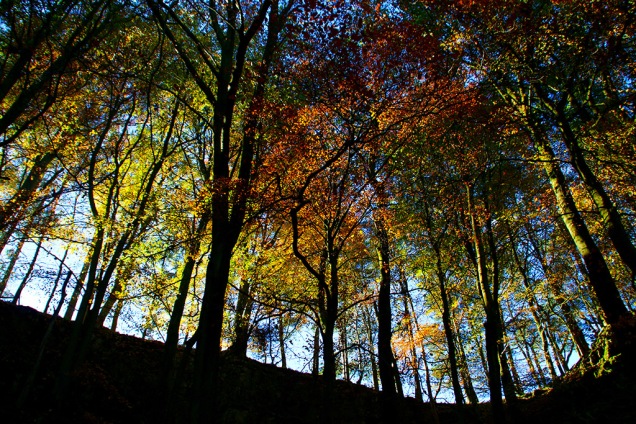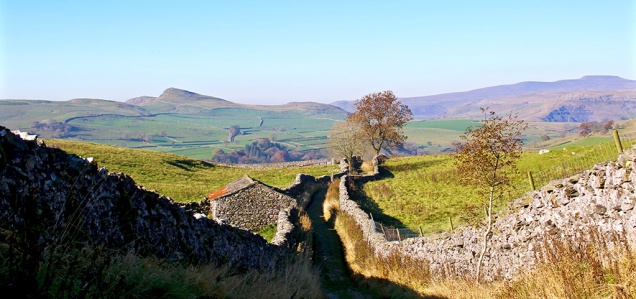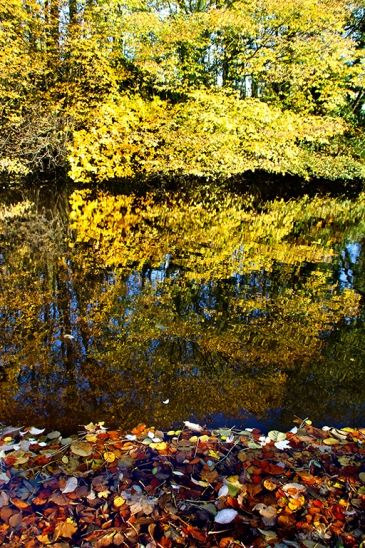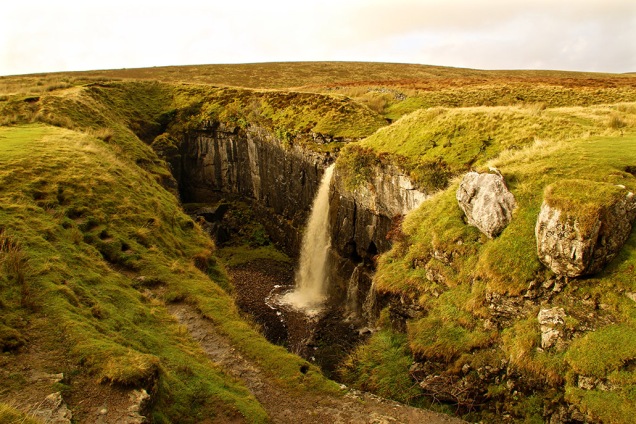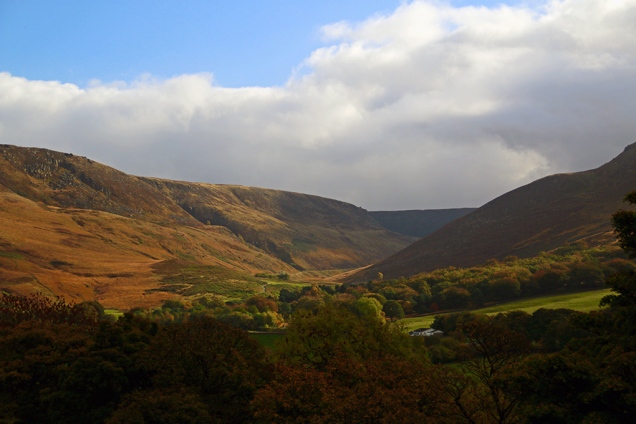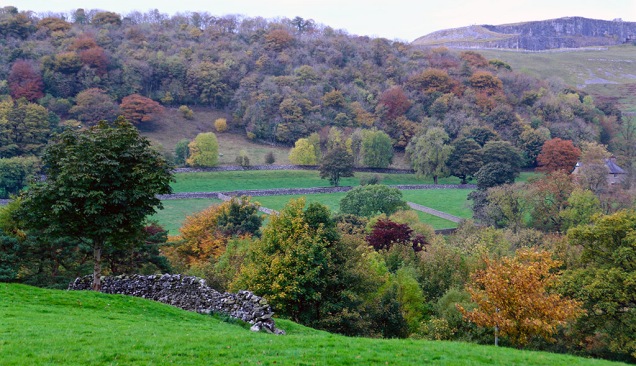
I wrapped up warm and headed for the the head of Ribblesdale on Sunday to see what the snow was like and hopefully capture some more Dales images. Obviously, the top photo was not taken last weekend, but I just couldn’t bide having yet another grey-sky shot to kick off the blog. To greet me at the gate of Ingleborough National Nature Reserve was a large brown bag from McDonalds left by some inconsiderate half-wit. It included containers of partly-eaten food. The nearest outlet is more than 30 miles away from Ribblehead, and I wondered just how many bins the moron passed on his/her way to the beauty spot. I put the rubbish in my car boot, took it home and binned it – not too difficult a task – but I certainly wasn’t ‘loving it’. Ice and a cold wind didn’t lighten my mood but at least I didn’t encounter any rain – for at least an hour or so.
A few outdoor types also leave evidence of their presence in the Dales. I read this week on www.grough.co.uk that a group put together by Kuta Outdoors bagged 16 sacks of rubbish on a clean-up around the Yorkshire Three Peaks route. Kuta Outdoors, who take groups along the Three Peaks routes several times a year, organised the litter pick with people who had walked alongside the company in the past raising money for various charities. Company owner Phil Lee said: “If everyone who comes to the Three Peaks picked up a bit of litter when they saw it, the peaks would stay clean all season.” Well done Phil and the litter-pickers but you really shouldn’t have to do this.
Curlew calling for help
The call of the curlew comforts me. It’s one of the signposts that reminds me I’m tramping the Yorkshire moors. I listen and watch out for the bird from April as it nests around here, and I’ve been known to follow the Ribble to  Morecambe, where it spends the winter, to watch it paddling about in the bay. Sadly, the curlew is now on the RSPB’s ‘Red List’ of endangered species www.rspb.org.uk They say the problem is caused by changes in upland management and increased predation. Nature is so finely balanced. Too often we forget we’re not the only species on Earth. I snatched this photo of a curlew as it carried out a fly-past over my head while I was walking between Helwith Bridge and Silverdale earlier this year.
Morecambe, where it spends the winter, to watch it paddling about in the bay. Sadly, the curlew is now on the RSPB’s ‘Red List’ of endangered species www.rspb.org.uk They say the problem is caused by changes in upland management and increased predation. Nature is so finely balanced. Too often we forget we’re not the only species on Earth. I snatched this photo of a curlew as it carried out a fly-past over my head while I was walking between Helwith Bridge and Silverdale earlier this year.
Trees please
I won’t be sending Christmas cards this year. Instead I’ll be making a small donation to the Woodland Trust. Sorry if that sounds like I’ve a bit of a ‘holier than thou’ attitude. I also think that dedicating a tree to someone is better than giving them a box of Quality Street – bet you’re glad you’re not on my Christmas list. The Woodland Trust does a great job campaigning against indiscriminate felling of trees and saving ancient woodland. Above, trees on Stainforth Scar; below, Gisburn Forest.
Wow! Amazing!
I’ve been a fan of Nature and outdoors programmes on TV for many years but I must admit to tiring of them now. Constant dumbing down; the way they give us a five-minute chunk of a story then ‘come back to it later’ really frustrates me. ‘Experts’ are given the shortest time possible to explain things properly so that OTT presenters can ‘have a go’ – I really don’t give a damn if ‘Ellie can milk a llama’ or not. And I’m constantly asking myself what these TV presenters said before they discovered ‘wow’ and ‘amazing’? Must be an age thing.
Fracking hell
Remember the way the Tories heralded their ‘localism’ idea of a few years back? Locals will get to decide on local matters and we’ll all live happily ever after, they claimed. And do you recall how they promised our National Parks and green spaces would remain free from developers and be kept for us all to enjoy? Guess what – they were lying. I’ve watched industrial wind farms spring up all around the Dales and on the edge of the National Park like some giant fence – most being erected against the wishes of the locals. I’ve seen bits of green land gobbled up by developers, again against the wishes of the locals. And now they are allowing more capitalist friends of the government to frack up our countryside. There are parts of the USA and Australia where fracking has taken place on a massive scale; where the consequences have included the contamination of water supplies, toxic waste destroying fertile ground, plants, trees and animal habitats, and huge disruption to the lives of residents. For a map of possible UK fracking sites click here http://frack-off.org.uk/locations/
Dales images 0f 2015
On re-reading this week’s blog, it seems like the persistent damp, grey conditions here in the dale are definitely making me grumpy. At least the bad weather has given me chance to motor on with an idea to portray a year in North Ribblesdale using my snaps. I’m going to be pasting on the site a photo (or two) from every week during 2015, starting this month with Dales images taken between January and April. I’ve not necessarily chosen the best technical or artistic shots, just the ones that tell a story or portray the dale at the time. Hope you enjoy them – May, June, July and August to follow next week (unless we have cracking weather and I’m out and about instead of staring at a computer screen getting even more miserable and political). You can click on the Dales images on the carousel to enlarge (automatically scrolls every 3 seconds). Merry bloody Christmas.




















































































